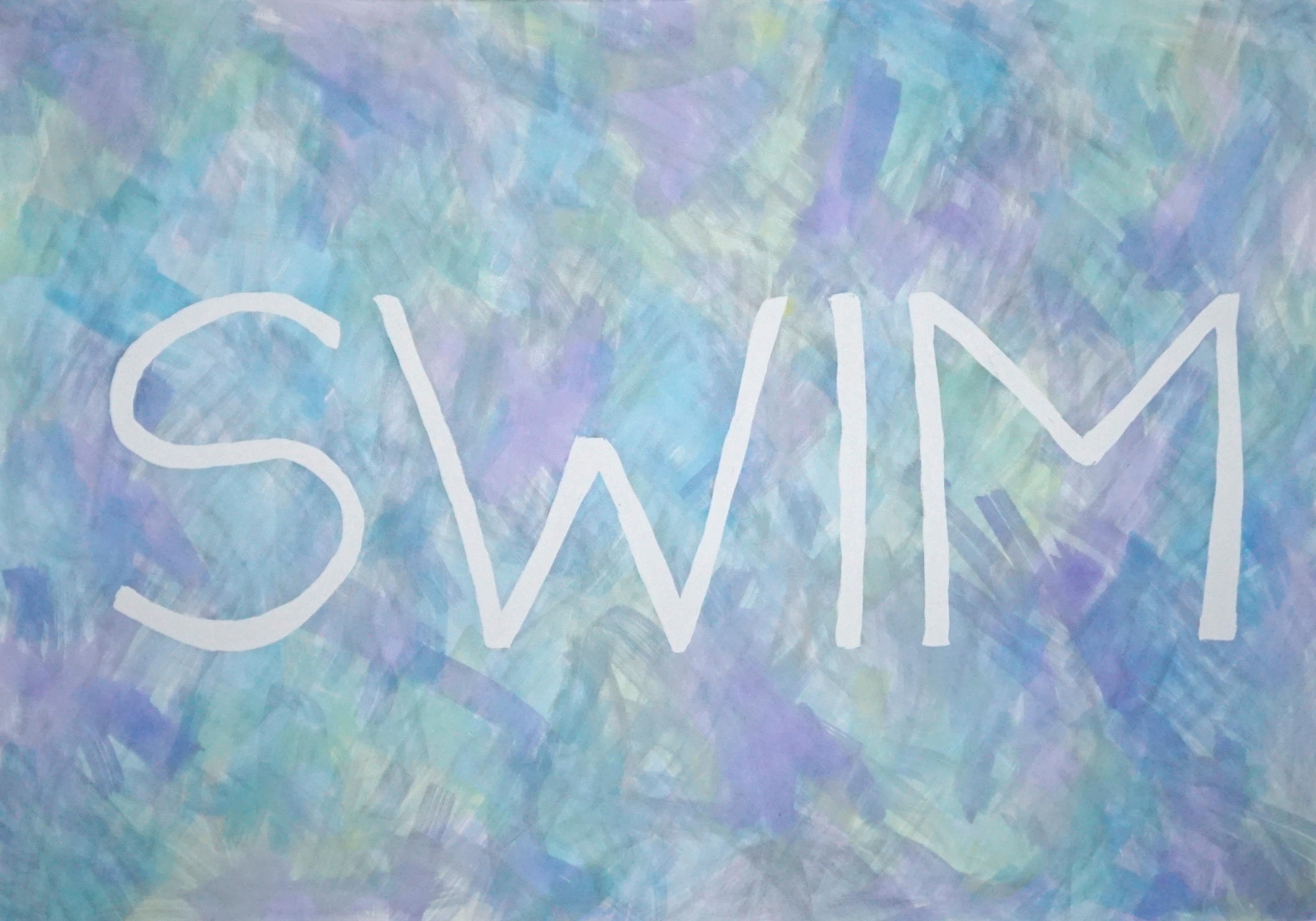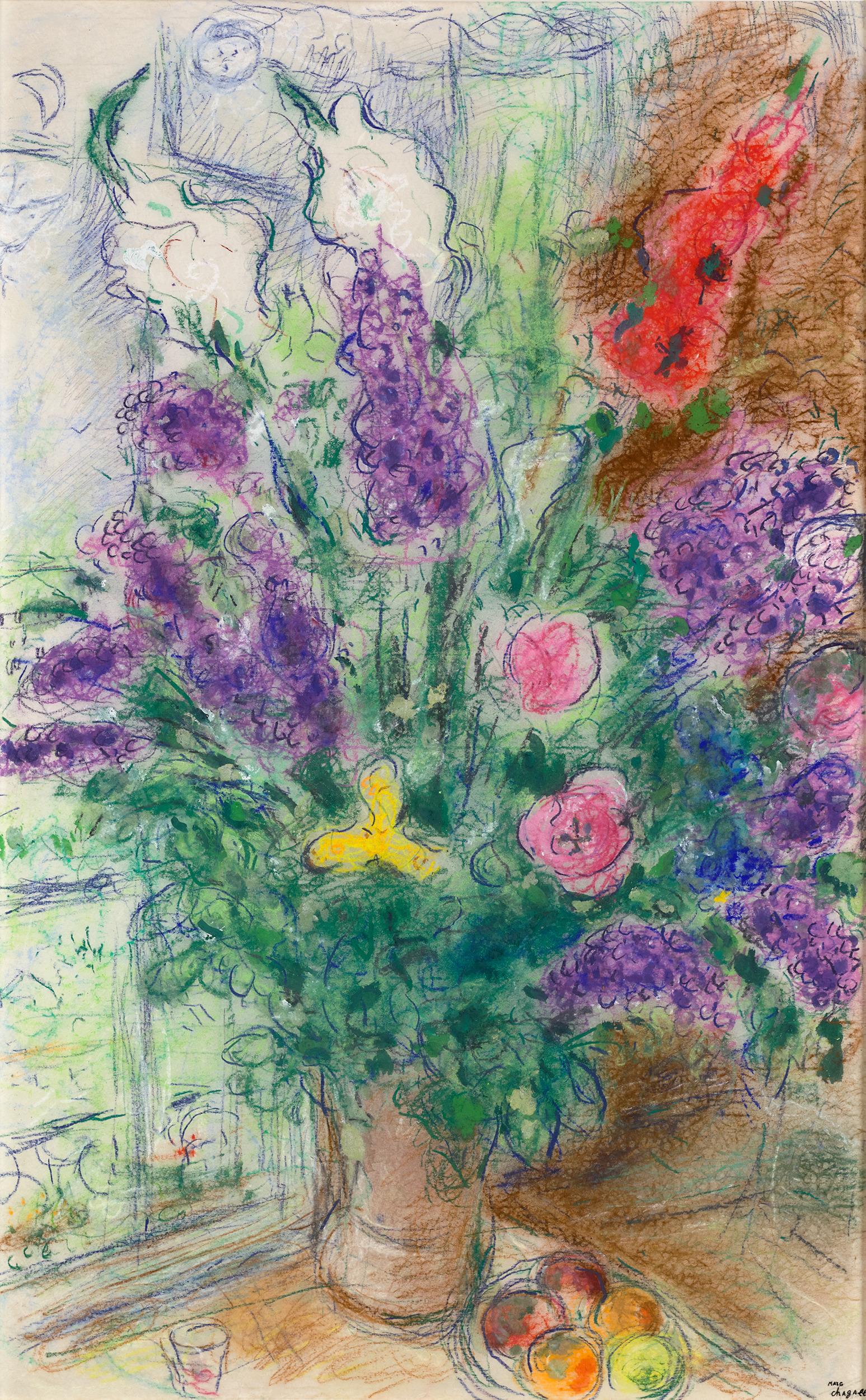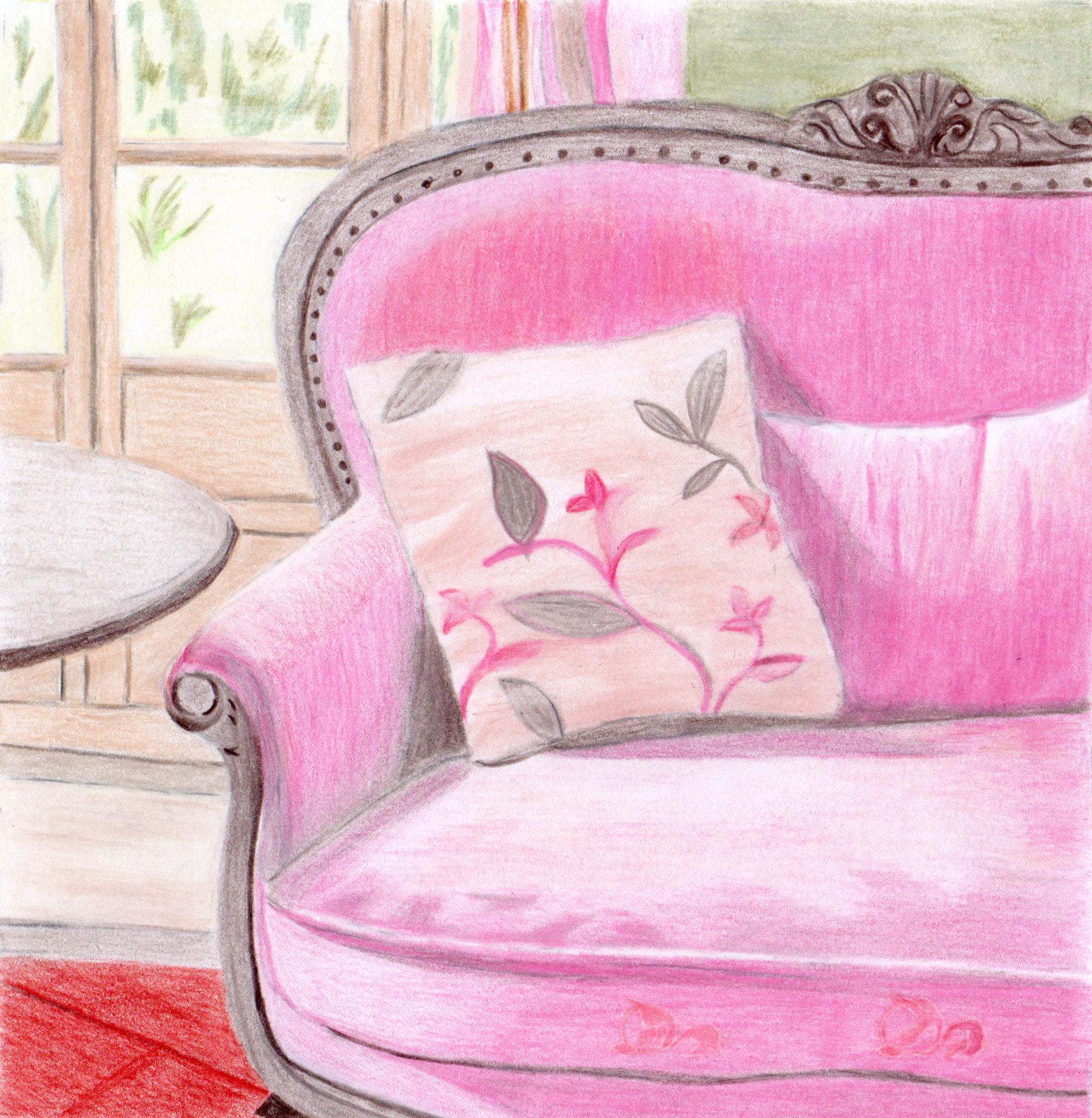Items Similar to Watercolor 19th French school flowers hollyhocks large Academic
Want more images or videos?
Request additional images or videos from the seller
1 of 11
UnknownWatercolor 19th French school flowers hollyhocks large Academic1857
1857
About the Item
French school of the mid-19th century
Watercolor
51 x 37 cm (69 x 55 cm with frame)
Signed and dated at the bottom “M. C. / 1857”
The hollyhock comes from China, passing through Syria, from where it was brought to us at the time of the Crusades.
With its stems of seven to nine feet, the large number of white, pink and red flowers with which it adorns its tall stem and its numerous flowers from July to September, this flower has been considered a symbol of fertility.
The Chinese represent Nature crowned with her flowers.
- Creation Year:1857
- Dimensions:Height: 20.08 in (51 cm)Width: 14.57 in (37 cm)
- More Editions & Sizes:69 x 55 cm with the framePrice: $935
- Medium:
- Period:1850-1859
- Condition:
- Gallery Location:PARIS, FR
- Reference Number:1stDibs: LU2524213219282
About the Seller
5.0
Vetted Seller
These experienced sellers undergo a comprehensive evaluation by our team of in-house experts.
Established in 2010
1stDibs seller since 2023
7 sales on 1stDibs
Typical response time: <1 hour
- ShippingRetrieving quote...Ships From: PARIS, France
- Return PolicyA return for this item may be initiated within 14 days of delivery.
More From This SellerView All
- Watercolor British school 19thcentury Diamond jubilee Portrait Queen VictoriaLocated in PARIS, FREnglish school from the end of the 19th century Watercolor and gouache 38 x 28 cm (60x49 cm with the frame) Very beautiful late 19th century frame in pitch pine wood. Very good condition This watercolor was made for the diamond "jubilee" in 1897 of Queen Victoria, crowned on the 20 June 1837 Queen of the United Kingdom of Great Britain and Ireland. She was also Queen of Canada from 1867 and Empress of India from 1876. This watercolor represents two portraits of the Queen, one in 1837 and the other in 1897, as well as a beautiful diamond which reminds of the famous Indian diamond the Koh-i-Nor which was presented in 1850 to Queen Victoria, for the 250th anniversary of the English East India Company, and cut and mounted on a tiara with two thousand other diamonds in 1852. We also recognize in this watercolor the insignia of the Order of the Star of India...Category
Late 19th Century English School Still-life Drawings and Watercolors
MaterialsWatercolor
- French romantic school PETIT Paris view architecture Saint Denis 19thLocated in PARIS, FRAntoine-Baptiste PETIT Paris, 1800 – Versailles, 1864 Watercolor 18 x 27 cm Antoine-Baptiste Petit was a decorative painter and teacher of perspective. He produced views of Paris in...Category
1830s Romantic Landscape Drawings and Watercolors
MaterialsWatercolor
- Drawing watercolor and ink Henri SOMM caricature cartoon Letter to Elise 19thLocated in PARIS, FRHenri SOMM Rouen, 1844 - Paris, 1907 Pen and watercolor 14 x 23 cm (22 x 28 cm with the frame) Signed lower right "H. Somm" Caricature of Beethoven writing his famous letter to Elis...Category
1860s French School Figurative Drawings and Watercolors
MaterialsInk, Watercolor
- Watercolor 20th Decorative French Saint Michael slaying the dragonLocated in PARIS, FRHenry MORIN Strasbourg, 1873 – Versailles, 1961 Watercolor Signed lower left "Henry Morin / 1950" 41 x 18 cm (53.5 x 29.5 cm with the frame) Framed Excellent condition After studying at the Ecole Nationale des Beaux- Arts of Paris, Henry Morin specialized in the illustration of children's books at the beginning of the 20th century. But from 1923, he also drew religious subjects for glassmakers masters, especially for the stained glass windows of the Joan of Arc chapel of the Saint-Julien Cathedral in Le Mans, France, and those of the church of the Catholic University of Lille. This is probably a preparatory work for a stained glass window, representing Saint Michael...Category
20th Century Art Nouveau Figurative Drawings and Watercolors
MaterialsWatercolor
- Watercolor French 19th signed DES FOUGERES Italian boy flute player PifferaroLocated in PARIS, FRG. DES FOUGERES (19th century) Watercolor and gouache 33 x 24 cm (38 x 29 cm with the frame) Signed lower left "G. des Fougères" Beautiful wood gilded frame of the beginning of the 2...Category
Late 19th Century French School Figurative Drawings and Watercolors
MaterialsWatercolor
- Gouache 19th or 20th Landscape French painting castle ruins Pyrénées in FranceLocated in PARIS, FRFrench school of the 19th century Gouache 16 x 24 cm (34 x 46 cm with the frame) Signed lower right "Pons S." Beautiful frame in carved and gilded wood from the 19th century Very goo...Category
Late 19th Century French School Landscape Drawings and Watercolors
MaterialsWatercolor
You May Also Like
- Garden FlowersBy Charles DemuthLocated in New York, NYCharles Demuth was one of the most complex, talented, and deeply sensitive artists of the American modern period. Whether he was painting floral still lifes, industrial landscapes, or Turkish bathhouses, art was, for Demuth, fraught with personal meaning. A fixture of the vanguard art scene in New York, Demuth navigated the currents of Modernism, producing some of the most exquisite watercolors and original oil paintings in twentieth-century American art. Demuth was born in Lancaster, Pennsylvania, the only child of a well-to-do family. He had an awkward and introverted childhood shaped by a childhood illness, Perthes, a disease of the hip that not only left him permanently lame, but, as part of the “cure,” bedridden for two years in the care of his mother. This long period of incapacitation had a deep impact on Demuth, who came to see himself as an invalid, an outsider who was different from everyone else. It was perhaps during this period of indoor confinement that his keen interest in art developed. Several relatives on his father’s side had been amateur artists, and, following his convalescence, his mother encouraged his artistic pursuits by sending him to a local painter for instruction. The majority of his early pictures are of flowers, a subject for which Demuth maintained a lifelong passion. Following high school, Demuth enrolled at the Drexel Institute of Art in Philadelphia, a school renowned for its commercial arts program. He advanced through the program rapidly, and, in 1905, at the encouragement of his instructors, he began taking courses at the Pennsylvania Academy of the Fine Arts. The two leading teachers then at the Academy were William Merritt Chase and Thomas Anshutz. Anshutz, himself a former student of Thomas Eakins, was well liked by his students, and is best known as the teacher of Robert Henri, John Sloan, and several of the other artists of the Ashcan School. Demuth, too, adopted a similar idiom, working in a controlled, realistic manner while at the Academy, where he remained until 1910. In 1907, Demuth made his first trip to Europe, staying in Paris. He spent time on the periphery of the art scene composed of the numerous American artists there, including John Marin and Edward Steichen. He returned to Philadelphia five months later, and immediately resumed courses at the Academy. Despite his introduction to advanced modern styles in Europe, Demuth’s work of this period retains the academic style he practiced before the trip. It wasn’t until he had summered at New Hope, Pennsylvania, in 1908 and 1911, that his style began to evolve. New Hope was a prominent American Impressionist art colony whose members were largely affiliated with the Pennsylvania Academy. Demuth dropped the conservative tone of his style and adopted a freer and more colorful palette. Although he remained based in Philadelphia, Demuth frequently went to New York during this period. Many of the same American artists of the Parisian art scene Demuth had encountered on his earlier European trip now formed the nucleus of New York’s avant-garde, which centered around Alfred Stieglitz’s 291 gallery. It wasn’t long before Demuth began to apply modernist-inspired strategies to his work. He was particularly influenced by the watercolor work of John Marin, also a former student of Anshutz, whose bold use of color in the medium Demuth freely adapted into looser washes of color. In 1912, Demuth again left for Paris, this time studying in the Académie Moderne, Académie Colorossi, and Académie Julian. In Paris Demuth met the American modernist Marsden Hartley. Hartley, a principal figure in the expatriate art circle, acted as a mentor to Demuth, and introduced him to the wide array of modern styles currently practiced in Europe. Hartley also introduced Demuth to many of the members of the Parisian avant-garde, including Gertrude Stein. Demuth was an aspiring writer, and he spent many hours in conversation with Stein. He wrote extensively during this period, and published two works shortly after his return to America. He also developed an interest in illustrating scenes from literary texts. From 1914 to 1919, Demuth produced a series of watercolors of scenes from books such as Emile Zola’s Nana and Henry James’s The Turn of the Screw. Upon his return to America, Demuth settled in New York. In 1914, Demuth had his first one-man show at Charles Daniel’s gallery, which promoted emerging modern American artists, including Man Ray, Rockwell Kent, Yasuo Kuniyoshi, Stuart Davis, and Max Weber. Demuth drew closer to the artistic vanguard in New York, becoming friends with many in the Stieglitz and Daniel circles, including Georgia O’Keeffe, Marcel Duchamp, Carl Van Vechten, and Edward Fiske. New York’s cosmopolitan atmosphere and active nightlife appealed greatly to Demuth. In a sketchy style well suited to watercolor, he painted many vaudeville and circus themes, as well as nightclub, café, and bathhouse scenes. Often with Duchamp, Demuth took part in an urban subculture replete with nightclubs, bars, drugs, and sexual permissiveness, which, for a homosexual artist like himself, allowed room for previously unattainable personal expression. Demuth’s pictures of sailors, bathhouses, and circus performers embody a sensual and sexual undercurrent, expressing the artist’s sense of comfort and belonging in the bohemian subculture of New York. Simultaneously, Demuth deepened his interest in floral pictures, painting these almost exclusively in watercolor. His style evolved from the broad color washes of his earlier pictures to more spare, flattened, and sinuous compositions, inspired by the drawings of Aubrey Beardsley and other artists of the Aesthetic Movement. Demuth’s flower watercolors are moody and atmospheric, sensuous and elegant, introspective and yet full of expressive power. Moreover they are beautiful, and are unequivocally among the finest still lifes in American art. Despite numerous subsequent artistic undertakings that led him in a variety of directions, Demuth never stopped painting flower pictures, ultimately adding fruits and other still-life objects to his repertoire. In 1916, Demuth began to develop a style later known as Precisionism, a form of landscape painting infused with Cubism, in which space is divided into precisely drawn geometric regions of color. Demuth first began to paint the landscape in an appropriated Cubist mode while on a trip with Hartley to Bermuda. In these early landscapes, in which the curvilinear forms of trees intersect the geometrically articulated architectural forms, Demuth explored ideas that shaped the future development of modernism in America. The full realization of Demuth’s explorations came after his return to America in 1917, when he turned his attention to industrial subjects. These works derive from a “machine aesthetic,” espoused by New York artists such as Francis Picabia, Joseph Stella, Albert Gleizes, and Duchamp, by which artists viewed machines as embodying mystical, almost religious significance as symbols of the modern world. Rather than painting the skyscrapers and bridges of New York as did most of his like-minded contemporaries, Demuth returned to his home town of Lancaster, where he painted factories and warehouses in a Precisionist idiom. The titles for these pictures are often contain literary references, which serve as clues for the viewer to aid in the decoding of the artist’s meaning. In 1923, Demuth planned a series of abstract “poster portraits” of his friends and contemporaries in the New York art and literary scene. In these “portraits,” Demuth combined text and symbolic elements to evoke the essential nature of his sitters’ distinguishing characteristics. In this fashion, he painted portraits of such artists as Georgia O’Keeffe, John Marin, and Arthur Dove. His most famous poster portrait, I Saw the Figure 5 in Gold...Category
20th Century American Modern Still-life Drawings and Watercolors
MaterialsPaper, Watercolor
- Mantel ClockLocated in Houston, TXFrench watercolor and pencil of ornate clock, circa 1930. Original artwork on paper displayed on a white mat with a gold border. Archival plastic sleev...Category
1930s Still-life Drawings and Watercolors
MaterialsPencil, Watercolor
- Swim, Summer Fresh Painting on Paper, Word Art Pastel Tones Typography in PurpleBy Ryan RivadeneyraLocated in Barcelona, ES"Swim is a hand-painted acrylic painting on high-quality 300g paper by artist Ryan Rivadeneyra. The hand-drawn render is reminiscent and inspired by the word art that Ed Ruscha produ...Category
2010s Pop Art Still-life Drawings and Watercolors
MaterialsInk, Archival Ink, Sumi Ink, Watercolor, Archival Paper, Acrylic
- Watercolor on Paper Painting, by Charles Burchfield, 1919Located in New York, NYCharles Burchfield 1893-1967 Trilliums and Rock Ledge, 1919 Gouache and watercolor on paper Provenance: The artist until at least 1963 Private collection, New York Private Collectio...Category
1910s Landscape Drawings and Watercolors
MaterialsWatercolor, Gouache
- Grand Bouquet Et Fruits Devant La Fenêtre À Paris By Marc ChagallBy Marc ChagallLocated in New Orleans, LAMarc Chagall 1887-1985 Russian Grand bouquet et fruits devant la fenêtre à Paris (Large bouquet and fruits in front of the window in Paris) Stamped with signature “Marc Chagall" (...Category
20th Century Post-Impressionist Still-life Drawings and Watercolors
MaterialsPaper, Pastel, Gouache
- Intérieur Provence, Realistic Figurative original Drawing, Colorful, InteriorLocated in AIX-EN-PROVENCE, FRColoured Pencils and pastel on Hahnemühle paper - Realistic Figurative original Drawing, Colorful, Interior. Work Title : Intérieur Provence Artist : Gabriel Riesnert...Category
21st Century and Contemporary Contemporary Interior Drawings and Waterco...
MaterialsWatercolor, Archival Paper, Color Pencil, Pastel




